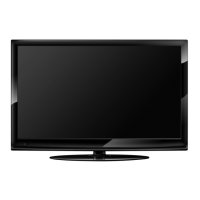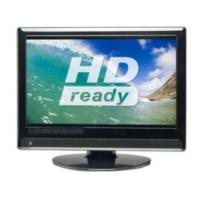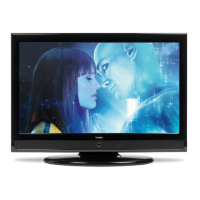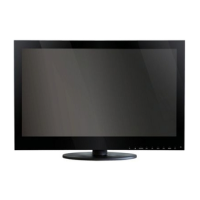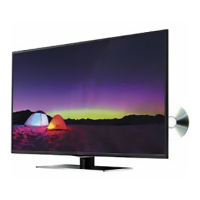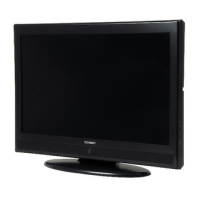Do you have a question about the Technika 32-2011 and is the answer not in the manual?
Operating instructions for the Technika 32-2011 colour television with remote control.
Manual guides proper operation of the TV. Read thoroughly before use.
Ensures proper ventilation and avoids faults by keeping objects away from the set.
Operate only from specified voltage; handle power cord carefully to prevent shock or fire.
Do not use in humid places or expose to rain/water to prevent danger and electric shock.
Clean with a dry cloth; ensure adequate ventilation for reliable operation and to prevent overheating.
Avoid placing near heat sources or open flames; disconnect during storms or holidays.
Use specified parts; refer servicing to qualified personnel to avoid electric shock or hazards.
Recycle packaging; dispose of batteries and electronic waste responsibly according to regulations.
Information on proper disposal of electrical and electronic devices in EU countries.
Ensure mains plug is accessible; avoid excessive headphone volume to prevent hearing loss.
Securely attach to wall if mounted; note that non-active pixels may appear on LCD screen.
Tips for reducing energy consumption and utilizing Power Save Mode.
Instructions to refer all servicing to qualified personnel for safety and proper repair.
Detailed list of buttons and their functions for operating the TV set.
Identifies and describes the function of the physical buttons on the TV set.
Details the SCART, PC Input, SPDIF Coaxial Out, and HDMI input sockets.
Explains CI Slot, Component Video, Video Input, Audio Inputs, and Headphone Jack.
Instructions for connecting the power cord and the aerial or cable TV plug.
Guide for displaying computer screen on TV via display and audio cables.
Instructions for connecting DVD players via HDMI, Component, or SCART sockets.
Instructions for inserting AAA batteries into the remote control handset correctly.
Procedures for turning the TV on from standby and switching it off completely.
Switching between sources and basic TV operation using buttons.
Guide to language selection, country setting, and automatic channel scanning.
How to view channel programme information and navigate the EPG menu.
How to enable and select subtitle language in the language settings menu.
Using teletext features, including subcode pages and reveal functions.
Changing screen format using the SCREEN button for optimal viewing.
Navigating the IDTV menu, managing channel lists, adding locks, and setting favourites.
How to move, delete, and rename channels within the channel list.
Setting timers and managing conditional access for pay-per-view channels.
Accessing and navigating the TV Setup menu for configuration options.
Configuring Dolby D Audio, Hard of Hearing, Parental Control, and Menu Lock settings.
Setting up parental locks, maturity locks, and PINs to restrict access to content or menus.
Configuring time settings, time zones, and managing audio description features.
Selecting preferred audio/subtitle languages and enabling standby search.
Performing installation, automatic channel scans, and clearing service lists.
Selecting country and language for analogue TV, and initiating channel search.
Adjusting picture modes, colour temperature, noise reduction, and other visual settings.
Setting colour temperature and reducing picture noise for optimal viewing.
Configuring game mode, adjusting picture zoom, and storing/resetting picture settings.
Controlling volume, equalizer, balance, and sound modes for optimal audio.
Configuring sleep timers, child lock, zoom, power save, backlight, and menu timeouts.
Setting teletext language and enabling HDMI PC full mode for optimal PC display.
Using install menu for channels, colour system, sound system, and fine-tuning.
Displaying programme table and selecting input sources like TV, DTV, HDMI, and PC.
Adjusting PC picture position, phase, and dot clock for optimal display.
Using mute, selecting picture modes, freezing pictures, and displaying TV info.
Changing aspect ratio using SCREEN button: Auto, 16:9, 4:3, Panoramic, Cinema, Subtitle, Zoom.
Guidance on resolving issues like image persistence, no power, poor picture, sound, and remote control.
Table listing typical resolutions and frequencies for PC input.
Compatibility table for various input signal types.
Details on TV broadcasting standards, reception channels, and digital reception.
Technical details including voltage, power consumption, dimensions, and weight.
Instructions for connecting the mains lead, colour coding, fuse replacement, and electrical safety.
Cautionary notes on preventing electric shock, exposure to rain/moisture, and servicing.
